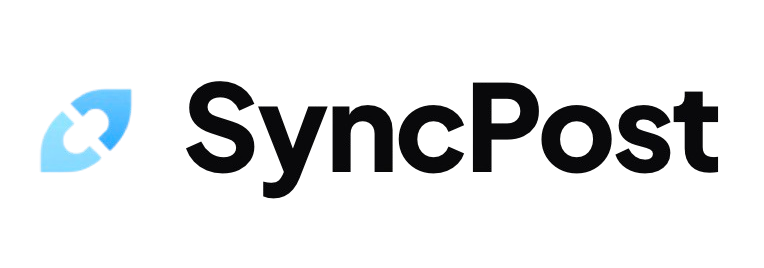
The Multi Platform Challenge
Managing your social media presence across different platforms can feel like juggling multiple conversations at once. Between posting on Instagram, Facebook, Twitter, and LinkedIn, you might spend hours each day just trying to keep up.
Your business needs to look and sound the same on every platform, but this gets tricky when each one has its own rules and best practices. Many companies end up posting different content on each platform without a clear plan, which confuses their followers. This scattered approach means you might miss chances to connect with potential customers.
Cross-platform management tools can help you post the same message everywhere with just a few clicks. These tools save you time and help keep your brand message clear across all your social media accounts.
Content Planning Tools
Smart content planning helps you stay organized and maintain a steady flow of posts across your social media channels and blog. Your audience expects regular updates, which makes having a clear plan for your content essential to growing your online presence.
Modern planning tools make content scheduling simple and fun. Airtable offers spreadsheet-like content calendars with custom fields for tracking post status, due dates, and content types. Notion and ClickUp combine content planning with document editing and task management, giving you everything you need in one place.
These tools make it easy for your team to work together on content ideas and get quick feedback on drafts. Once your content is approved, you can use SyncPost to share it with your Twitter and Bluesky followers, making sure your planned content reaches both platforms without extra work.
Scheduling Solutions
Social media scheduling tools can save you hours each week by automating your posting schedule. Instead of logging in multiple times daily to post content, you can set up a week's worth of posts in one sitting.
Buffer excels at Instagram and Facebook scheduling, offering a clean interface that's perfect for small businesses. Hootsuite supports the widest range of platforms, including LinkedIn and Twitter, while providing detailed analytics for each channel. Later stands out with its visual planning tools and strong Instagram integration, though it offers fewer platform options than its competitors.
Your choice of scheduling tool should depend on which social platforms matter most to your business. You can start with a free plan from any of these services to test their features before committing to a paid subscription.

Analytics Platforms
Your social media success depends on understanding how your content performs across different platforms. Getting this insight helps you make better decisions about where to focus your time and money.
Tools like Sprout Social give you a complete view of your social media performance in one dashboard. Brandwatch helps you track conversations about your brand across multiple platforms, while Socialbakers provides detailed reports about your audience engagement on different networks.
By checking your analytics regularly, you can spot which types of posts work best on each platform. This information lets you adjust your content mix to get better results from each social network.
Cross Platform Design Tools
Creating designs that look good on every platform can feel like solving a puzzle with different-sized pieces. Your social media posts, website banners, and email graphics need to maintain the same brand feel while fitting perfectly on each platform's unique dimensions.
Modern design tools make this job much easier. Canva and Adobe Express offer ready-made templates sized for every major platform, while Figma lets you create flexible designs that adapt to different sizes. These tools come with built-in sizing presets for everything from Instagram Stories to LinkedIn covers.
You can save time by creating a main design first, then using the resize feature to adapt it for other platforms. Setting up design templates with your brand colors, fonts, and logo elements will help you maintain consistency across all your marketing channels.
Automation Tools
Automation helps you handle multiple social media accounts without spending hours copying and pasting the same content. Your team can focus on creating great content while automated systems take care of the repetitive posting tasks.
Zapier, IFTTT, and Make are popular tools that connect your apps and social platforms. These tools let you create automated workflows between hundreds of different services without any coding knowledge. You can set up actions like automatically sharing your blog posts to social media or saving mentions of your brand across platforms.
Start with a simple automation workflow that solves one specific problem, like posting the same update across two platforms. For a real example of effective automation, check out SyncPost, which helps you automatically sync your posts between Twitter and Bluesky, saving you time while keeping your presence consistent on both platforms.
Content Repurposing Tools
Creating fresh content for each social media platform can eat up your time and resources. You can work smarter by adapting your existing content to fit different platforms, reaching more people with less effort.
Repurpose.io helps you turn your podcasts into social media posts and blog articles with a few clicks. Wavve specializes in turning audio clips into eye-catching videos with animated waveforms. Headliner offers similar features and adds automatic captioning to make your videos accessible to everyone.
Quality should be your top priority when you repurpose content across platforms. Before publishing, check that your repurposed content keeps its core message intact and matches the style of each platform you're using.

Community Management Tools
Managing social media communities on multiple platforms can feel like juggling several conversations at once. You need to keep track of comments, messages, and mentions across Facebook, Instagram, Twitter, and LinkedIn, all while maintaining a consistent voice and timely responses.
Modern community management tools make this task much simpler with their unified inbox features. Agorapulse helps you handle all your social interactions in one place, while Mention alerts you about brand mentions across various platforms. Tools with Social Inbox features let you see and respond to all your social messages from a single dashboard.
Smart prioritization features help you spot urgent messages that need immediate attention. You can set up custom rules to flag important interactions and ensure no critical community feedback gets missed across your social channels.
Social Listening Tools
Keeping track of what people say about your brand online is crucial for maintaining your reputation and connecting with customers. You need to watch conversations happening across social media, review sites, blogs, and news outlets to get the complete picture of your brand's online presence.
Brandwatch helps you track mentions across 100+ million online sources with real-time alerts and detailed analytics. Talkwalker stands out with its AI-powered image recognition that catches brand mentions in photos and videos, while Hootsuite Insights makes it simple to monitor multiple social networks from one dashboard.
The data you collect through these tools shows you exactly what your audience likes, dislikes, and wants to see more of. You can use these insights to create content that speaks directly to your audience's interests and needs.
Content Creation Tools
Creating content for different platforms doesn't have to eat up your entire day. You can speed up your workflow by using templates and adapting your core message for each platform's format.
Modern tools make content creation much simpler and more professional. Grammarly helps you catch writing mistakes and improve your text clarity, while Jasper can help generate fresh content ideas and first drafts. Kapwing lets you edit videos and create visuals without needing expert design skills.
Your brand voice is what makes your content uniquely yours, no matter where you share it. Make sure to create clear brand guidelines that outline your tone, word choice, and messaging style to keep your content consistent across all platforms.
Team Collaboration Tools
Managing multiple social media teams requires clear communication and consistent coordination between team members. Your teams need to stay in sync about content schedules, brand messaging, and campaign goals across different platforms.
Modern collaboration tools make social media team management much simpler and more organized. Slack helps your teams chat and share files instantly, while project management platforms like Asana and Monday.com let you track tasks, deadlines, and campaign progress in one place. These tools offer features like calendar views, task assignments, and progress tracking that keep everyone aligned with your social media strategy.
Setting up clear workflows with assigned roles and responsibilities helps prevent confusion and duplicate work. When you have solid processes in place, your teams can focus on creating great content instead of wondering who's doing what.
Common Questions
Getting started with cross-platform tools can bring up many questions. Here are the most common questions you might have about picking and using these tools effectively.
How do I choose the right tool combination?
Start by listing your main business tasks and match them with tools that solve those specific needs. Pick tools that work well together and share data easily - for example, if you use Slack for team chat, choose project management tools that have Slack integration.
Are free tools sufficient for small businesses?
Free tools can work great when you're just starting out or running a small operation. You can get by with free versions of popular tools for basic tasks, but expect to upgrade to paid versions once you need features like advanced reporting or team collaboration.
How do I maintain consistent branding across tools?
Create a simple brand guide with your colors, logos, and tone of voice before setting up any tools. Save your brand assets in a shared folder and use them to customize each platform's appearance - this includes profile pictures, cover images, and custom templates.
What's the learning curve for these tools?
Most modern cross-platform tools are built to be user-friendly and can be learned within a few days of regular use. Plan for about a week of learning time for basic features, and set aside 2-3 weeks for your team to become comfortable with advanced features.
How do I measure ROI from cross-platform tools?
Track time saved on tasks, team productivity improvements, and customer satisfaction scores. Compare these metrics to your tool costs monthly, and look for specific improvements like faster response times or fewer missed deadlines.
